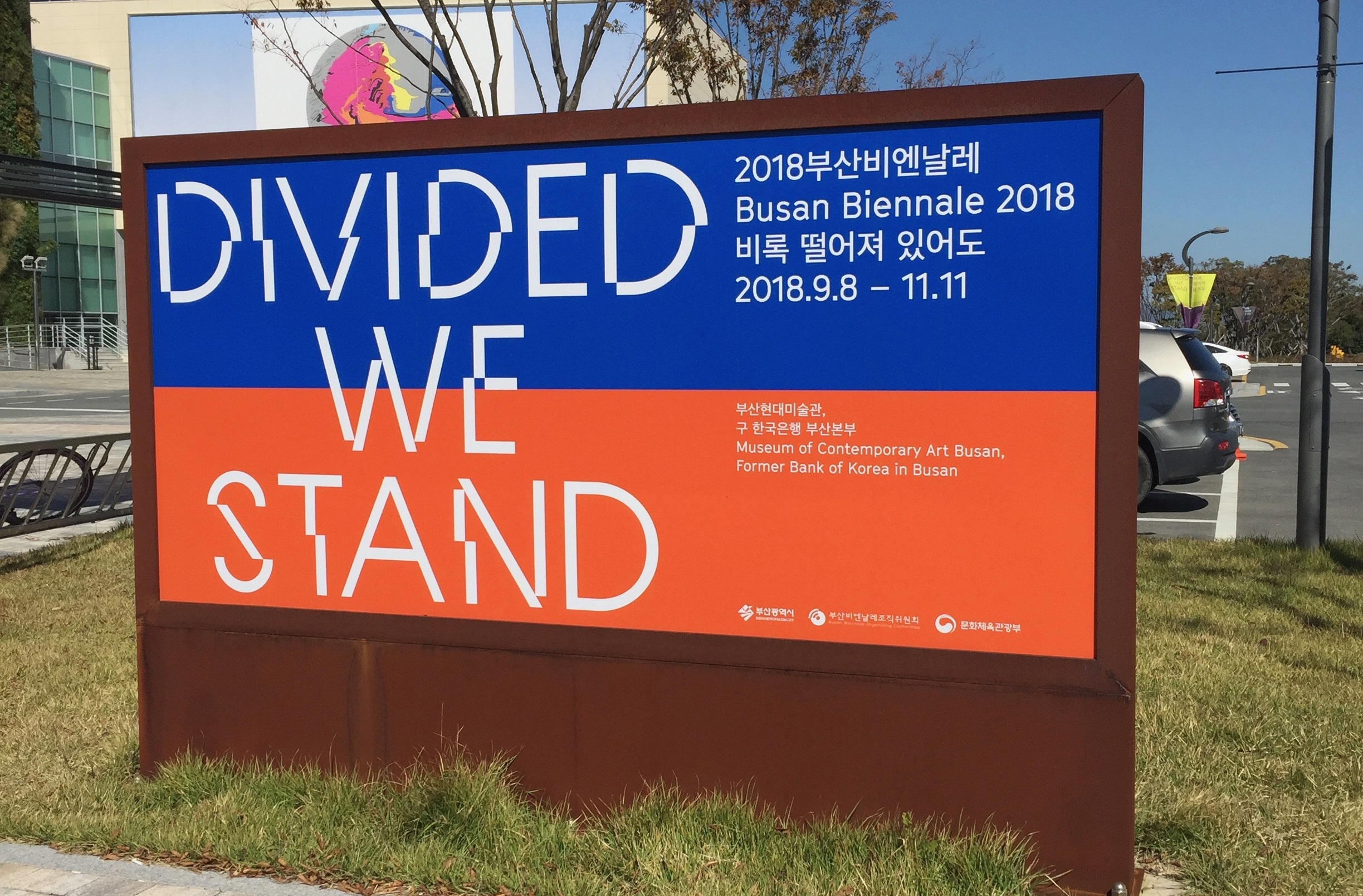
This was my first visit to the Busan Biennale, and having been the day before to the vastly overpopulated Gwangju Biennale, the Busan Biennale curators’ choice of focusing on the work of just 66 artists meant that there was more breathing space to invest the necessary time to properly engage with the works and to reflect on the theme of divided territories.
The biennale was presented across two spaces, clearly demarcating its two main concerns – the Museum of Contemporary Art Busan where the work themed around the Cold War era was presented, and the former Bank of Korea where the more dystopian and futuristic pieces were displayed.
A strong collection of moving image work had been selected for the Biennale, and a clear rationale for how they fitted the curatorial vision. Some of the stand out pieces included:
Hayoun Kwon’s 489 Years, one of the few pieces that employs animation to skillfully create a fictional representation of the DMZ landscape. The detailed computer graphics wonderfully leads the viewer on a journey much as though experiencing a first person shooter game, into a space that divides two nations and has been visited by few Koreans, and that is both simultaneously a deadly war zone and a beautiful wilderness. The piece also exists as a VR work and I imagine would be an excellent way to experience the narrative. Here is an excerpt.
Two pieces by Hito Steyerl were included – Die Leere Mitte (The Empty Centre) from 1998 and ExtraSpaceCraft from 2016. Where the first piece as a single-screen essay film analyses the historical significance of Potsdam Square in Berlin and how migrants have been treated in its gentrification, the second piece employs a multi-screen setting and sculptural seating arrangement in a more playful imagining of how an observatory in Iraqi Kurdistan that is a base for drone surveillance might be one day be employed by a fictitious space agency. Aside from being great works, it was interesting to see how Steyerl’s practice has developed over nearly two decades.
Wanuri Kahiu’s Pumzi felt well situated within the former bank given the theme of government control underpinning the work. Kahiu has crafted an Afrofuturist work about climate change and territorial control with excellent sci-fi styling and computer graphics. As a cautionary tale it looks to a future where water is scarce and dreams are to be suppressed. Trailer can be viewed here.
Ming Wong’s Tales from the Bamboo Spaceship (Part 1) connects historic Cantonese Opera to contemporary science fiction on screen. The piece makes use of the office space of the former bank, where Wong’s research notes are displayed alongside the monitors. The piece critically explores gender, sexuality and racial politics and is a rich introduction to Wong’s interest in identity and cultural authenticity.
Whilst dealing with challenging concerns and the psychological impact of division, war, territory, and conflict, the works in the biennale were unified in their presentation of thought provoking, and at times, playful ideas with an optimistic message at the core.







